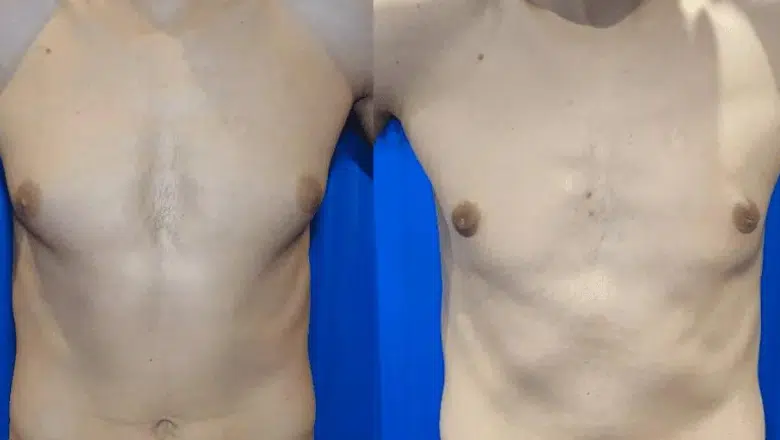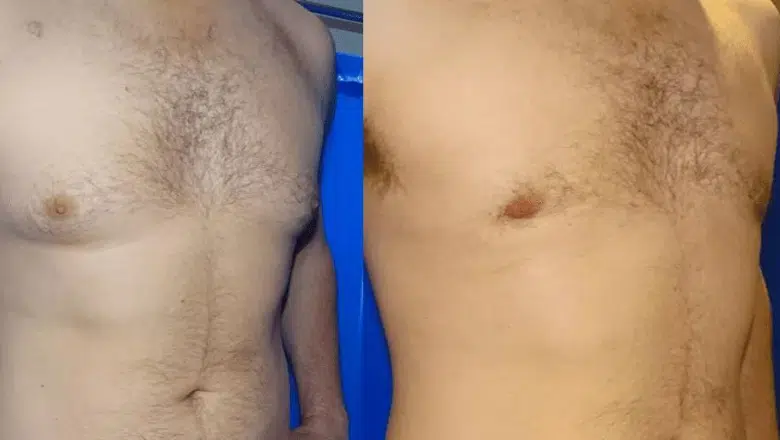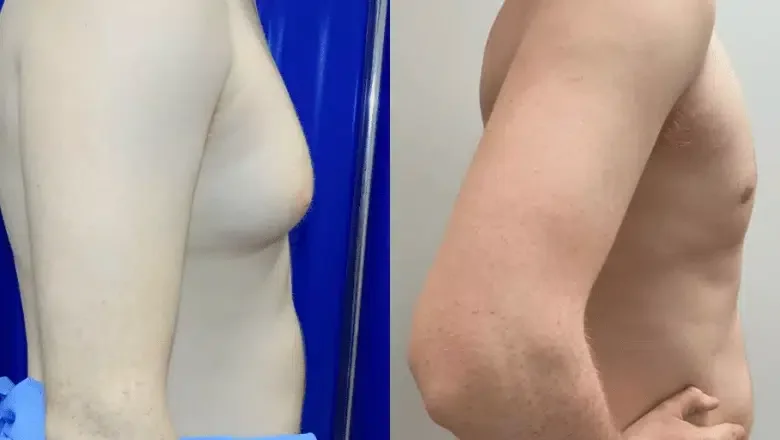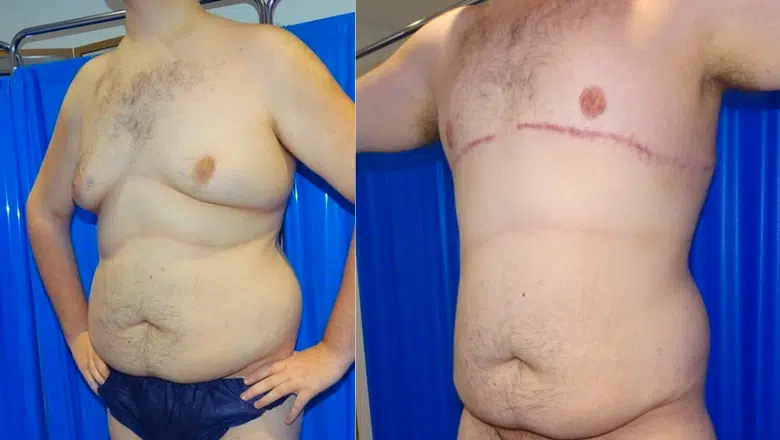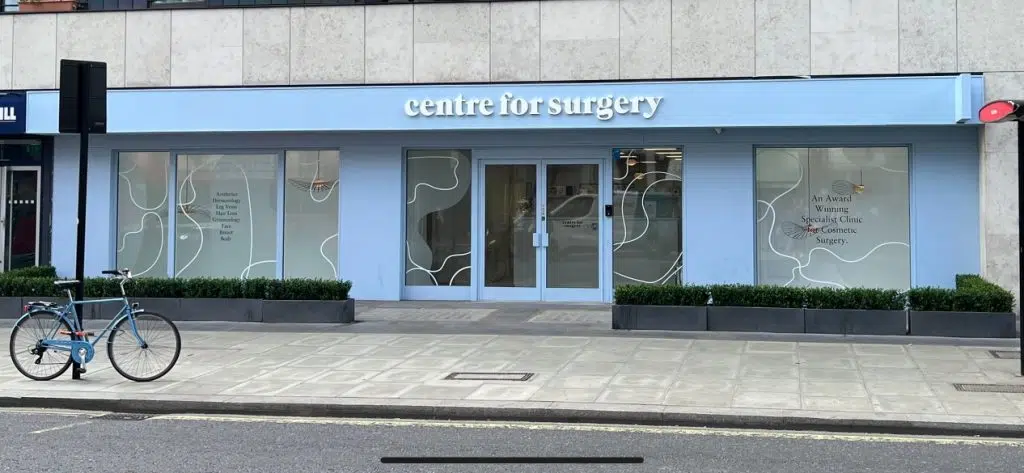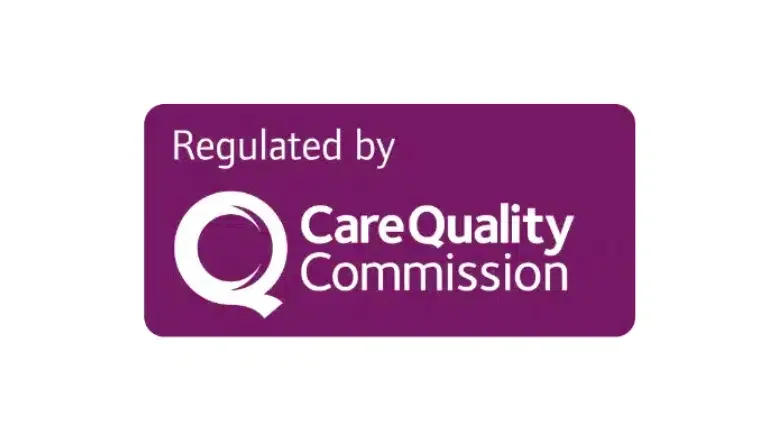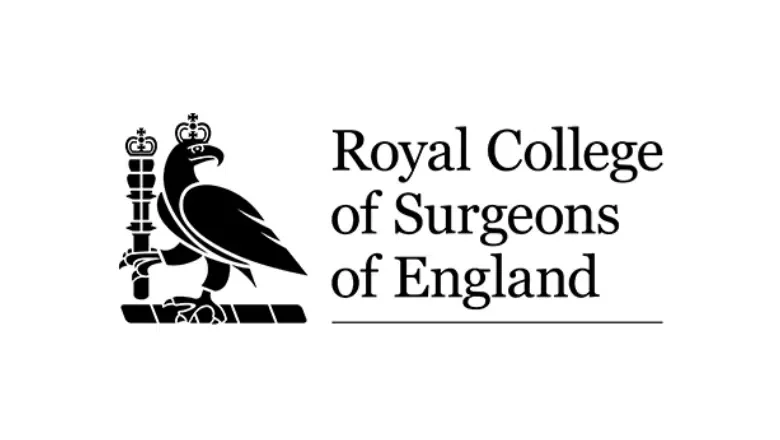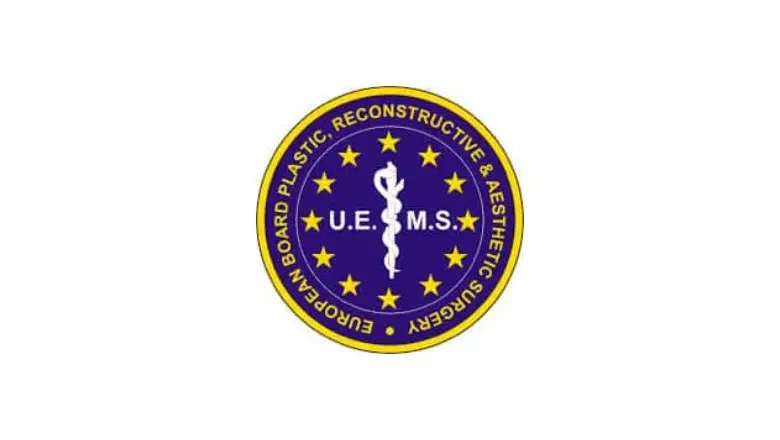Gynecomastia Surgery London UK
Take control of your body and feel confident with gyno surgery – a personalised procedure designed to correct gynecomastia and restore a more masculine chest contour for a more comfortable and confident you
Gynecomastia or Gyno involves the development of excess breast tissue, also known as “man boobs” or “moobs: which can result in significant embarrassment and loss of self-confidence. Gynecomastia surgery, or gyno surgery is designed to treat this condition. Several different techniques can be used to contour, sculpt and flatten the chest depending on the severity of the condition. Combination treatment using liposuction and/or surgical excision is commonly recommended to eliminate glandular tissue and excess fat that may have accumulated in the chest area.
RELATED: Gynecomastia Surgery FAQs – Q&As about Male Breast Reduction
Why do men have gynecomastia surgery?
It has been estimated that as many as 60% of all men in the UK suffer from the condition. Whilst man boobs are commonly associated with overweight older men, the condition is equally prevalent in younger men and adolescents who may develop prominent male breasts. Male breast reduction should not be seen as a method of weight loss. Men who are significantly overweight or obese may wish to try modifying their lifestyle or consider weight loss surgery if they are significantly obese. Some men often notice they have more than two nipples, and third nipple removal can be easily carried out in the same procedure if required.
RELATED: Which celebrities have had gynecomastia?
Centre for Surgery in London is the leading UK gynecomastia clinic for treating all grades of gynecomastia using the most advanced surgical techniques at our state-of-the-art clinic in Marylebone.
What is Gynecomastia?
Gynecomastia is a medical condition characterised by the enlargement of male breast tissue, resulting from an imbalance in the levels of hormones in the body. It can affect one or both breasts, and may develop at any age, including infancy, puberty, and adulthood. A variety of factors, such as hormonal imbalances, certain medications, drug use, obesity, liver disease, or genetic factors can cause the condition.
RELATED: Why Is Gynecomastia Becoming More Common?
Gynecomastia often presents as a tender or painful mass beneath the nipple that may feel rubbery or firm. In some cases, it can be accompanied by breast discharge. Although it is generally not a serious medical condition, gynecomastia can cause emotional distress and self-consciousness in men.
Diagnosis typically involves a thorough physical examination, medical history, and, if necessary, additional tests such as blood work or imaging studies to rule out other potential causes. Treatment for gynecomastia depends on the underlying cause and may include medication to balance hormone levels, weight loss, or surgical intervention, such as male breast reduction, to remove excess tissue and restore a more masculine chest appearance.
How common is gynecomastia surgery in the UK?
The exact number of gynecomastia surgeries performed in the UK is difficult to determine, as many surgeries are performed privately, and not all data is publicly available. However, studies suggest that gynecomastia surgery is becoming increasingly common in the UK.
According to a report published by the British Association of Aesthetic Plastic Surgeons (BAAPS) in 2019, male breast reduction surgery was the third most popular cosmetic surgery procedure for men in the UK, with 1,099 procedures performed that year. This represents an increase of 28% from the previous year, indicating a growing demand for gynecomastia surgery.
Another study published in the Journal of Plastic, Reconstructive & Aesthetic Surgery in 2019 found that the number of gynecomastia surgeries in the UK increased by 20% between 2015 and 2018. The study also found that most patients undergoing gynecomastia surgery were between the ages of 19 and 45.
What Causes Gynecomastia?
It is not uncommon for young men who are going through puberty to develop excess glandular tissue and fat on the chest. Natural surges of hormones occur during puberty which leads to physical changes. In some cases, this can lead to the appearance of breast buds or puffy nipples composed of excess fat and land around the nipples. Although this can be a difficult stage for many young men, gynecomastia is commonly experienced at this time. In virtually all cases, boys can expect their puffy nipples to go away on their own as they mature into young adult men. No active treatment is required other than following a healthy lifestyle.
RELATED: What Causes Gynecomastia?
Although gynecomastia can be caused by normal hormonal surges during adolescence, an overall imbalance of hormones can also cause the condition. Knowing whether your puffy chest is abnormal or not depends on your age. Excess breast tissue can even occur in young baby boys, which will disappear on its own in virtually all cases. Young men are also prone to developing the condition, which again will settle on its own without any further treatment in most cases. This situation changes when men in their 20s and above begin to notice excess breast tissue. There are several causes of enlarged male breast tissue in men, including hormonal imbalances.
Gynecomastia surgery before and after photo gallery
Gynecomastia surgery can be a life-changing procedure, helping to enhance your appearance and boost your self-confidence. However, it’s important to understand that the surgery may not necessarily change your looks to match your ideal. Before deciding to have surgery, it’s crucial to think carefully about your expectations and discuss them openly and honestly with your gynecomastia treatment specialist.
At Centre for Surgery, we believe in providing our patients with realistic expectations about what can be achieved through gynecomastia surgery. Our experienced plastic surgeons will work closely with you to understand your goals and expectations for the procedure, and provide you with a comprehensive understanding of what can be achieved.
The results of gynecomastia surgery are significant and permanent, but it’s essential to have realistic expectations about the outcome. If your expectations are realistic, you will likely be very satisfied with your new look.
To get a better understanding of the results that we have achieved with other patients, we encourage you to take a look at our Gyno Surgery before and after photo gallery. This can give you a sense of what is possible through gynecomastia surgery and help you set realistic expectations for your own procedure.
During your in-depth consultation with one of our experienced plastic surgeons at our Baker Street clinic, you will be able to see a more comprehensive collection of gynecomastia photos. This can help you understand the range of outcomes that can be achieved through surgery and give you a better sense of what to expect.
Gyno Before & After
Case 1:
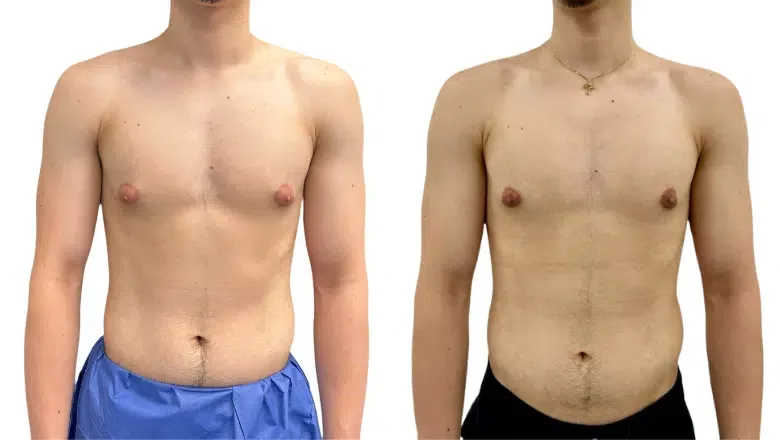






Case 3:


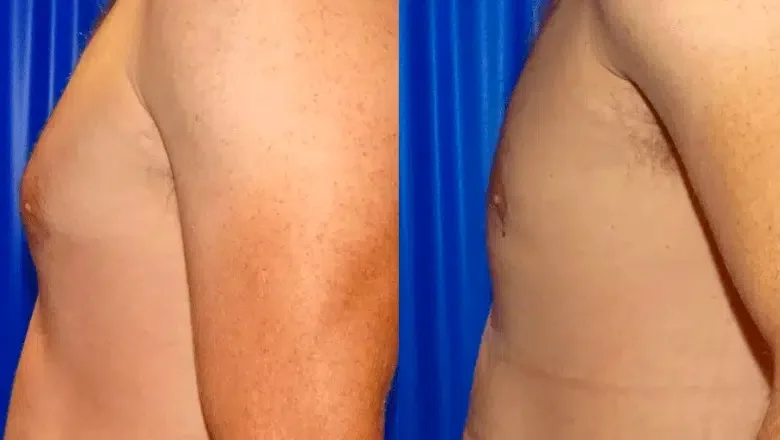
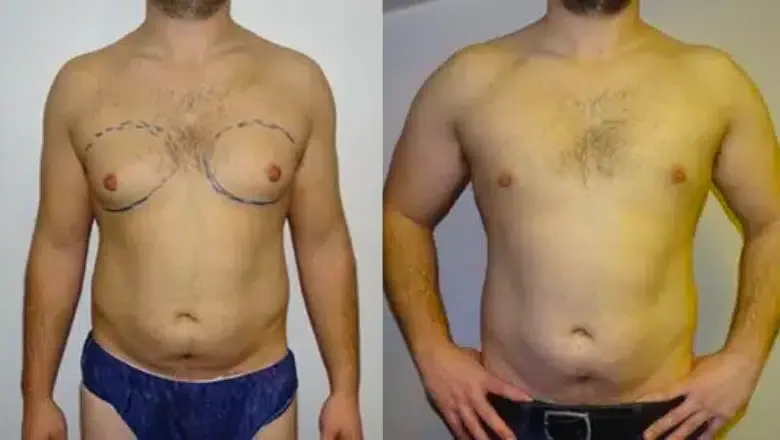
Case 5:
Case 6:
Case 7:
Case 8: 
Case 9:
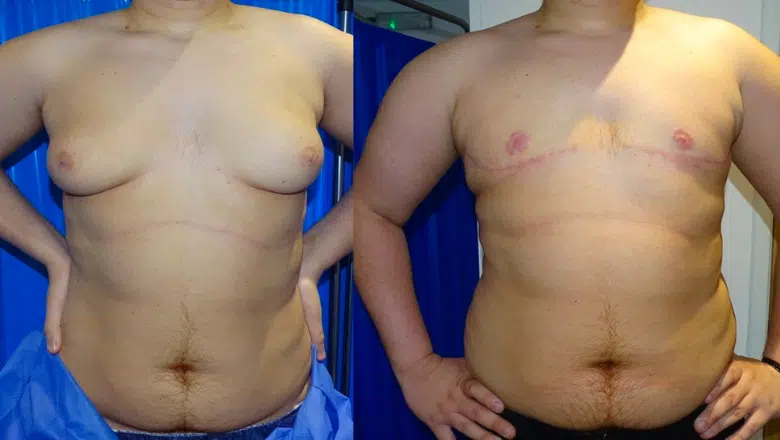
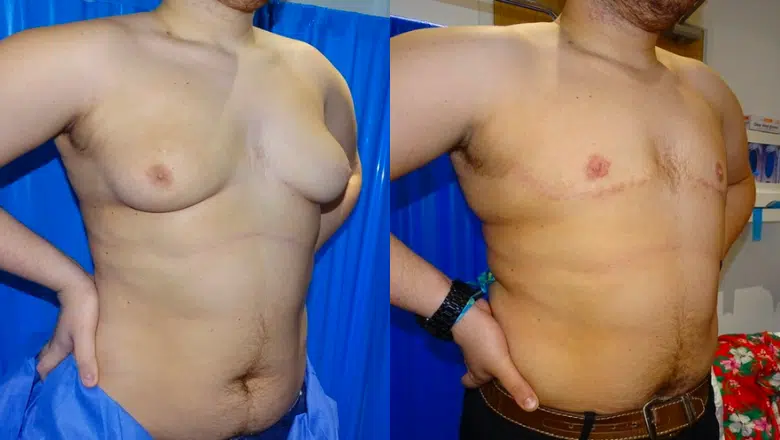
Case 10:
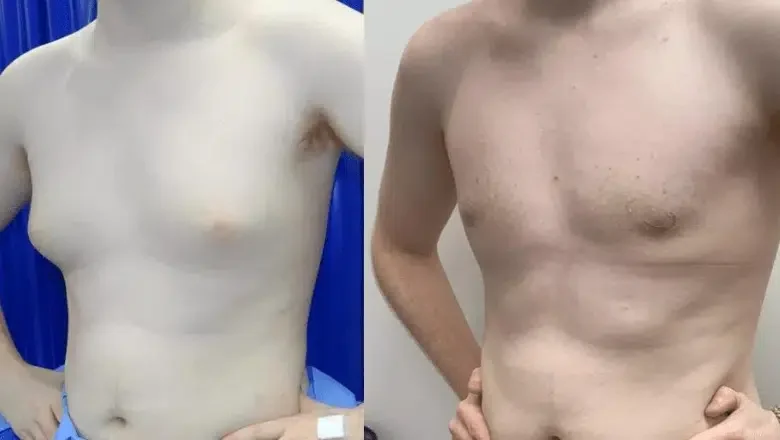
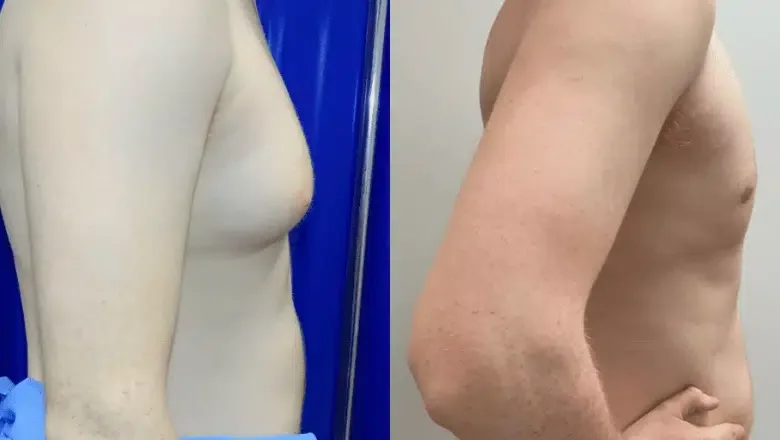
Case 11:
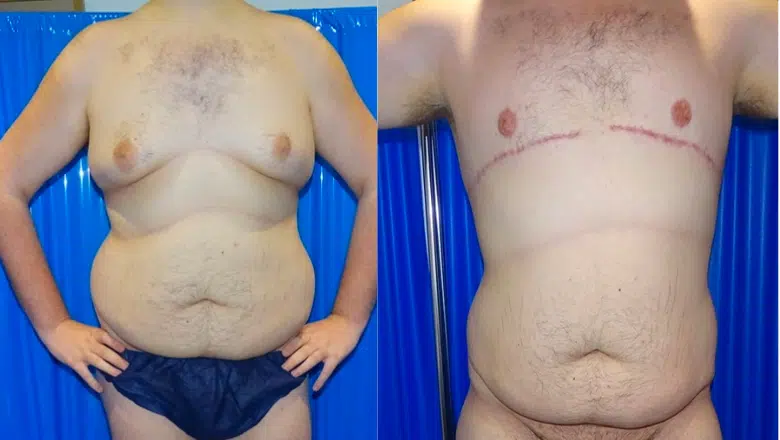
Benefits of Gynecomastia Surgery
Gynecomastia, the enlargement of male breast tissue, can cause significant emotional distress for those affected. Whether it’s due to hormonal imbalances, obesity, or certain medications, this condition can severely impact self-esteem and body confidence. Gynecomastia surgery offers a solution, bringing several notable benefits.
The main advantage of gynecomastia surgery is the restoration of a masculine chest contour. By removing excess breast tissue and sometimes excess skin, the chest appears flatter and firmer. This transformation often leads to a significant boost in body image and self-confidence.
Physical comfort also improves after surgery. Men with enlarged breasts may experience discomfort during physical activities like running or intense exercises, often due to chafing. Surgery alleviates these issues, making physical activities more comfortable and enjoyable.
After surgery, many men find their clothing options expand. Previously, they might have avoided tight-fitting shirts or swimwear due to self-consciousness. Post-surgery, they often feel more comfortable and confident in a variety of clothing styles, enhancing their overall sense of style and comfort.
The psychological benefits are equally important. Men with gynecomastia frequently struggle with body image issues, sometimes avoiding social or physical activities to hide their condition. Successful surgery can lead to improved self-esteem, increased social confidence, and better overall mental health.
The results of gynecomastia surgery are usually long-lasting, provided a healthy lifestyle is maintained. This long-term improvement gives men peace of mind, knowing they can enjoy their new chest contour for years to come.
Modern surgical techniques have also minimised scarring from gynecomastia surgery. Small incisions are used, leading to less noticeable scars that fade over time and are typically placed in less visible areas.
RELATED: Does exercise prevent gynecomastia?
Am I suitable for Gyno Surgery?
The best way to determine your suitability for gyno surgery is to have an in-person consultation with an expert gynecomastia surgeon in London. Ideally, men should be physically and mentally healthy with good skin elasticity. This will help the skin to contract to your new contour shape after male breast reduction. Man boob surgery most commonly involves a combination of either liposuction, surgical excision, or both to achieve a masculine-looking chest. When male breasts significantly protrude through common clothing items, leading to emotional distress, this is a valid reason to have the procedure. There are two main age ranges for men who choose to have this procedure, including:
- Younger men who are embarrassed about how their chest looks but may otherwise be in good shape.
- Older men in their late 40s and above want to get rid of excess fat and loose skin.
Many men can be in excellent physical condition and still have puffy nipples or swollen breasts. The best way to determine your suitability for gyno surgery is to have an in-person consultation at our specialist clinic in London. The procedure is also ideal for men who have lost a significant amount of weight and have been left with sagging skin in the chest. No amount of diet and exercise will be able to get rid of loose skin. The best treatment involves excess skin removal to tighten the chest, which may be combined with liposuction and gland removal to flatten the chest.
RELATED: How to get rid of puffy nipples in men
Is gynecomastia dangerous?
Most men with gynecomastia are not at risk of developing a serious medical condition such as cancer. Having enlarged male breasts is, however, linked with significant emotional and social upset. Men who have man boobs can feel increasingly self-conscious about how they look. This can affect the types of clothes a man chooses to wear, and he may refrain from removing their shirt when on a beach holiday. In severe cases, men may avoid certain social situations altogether and may find it difficult to form intimate relationships due to feeling uncomfortable about the appearance of male breasts.
Men should have realistic expectations about what the procedure can achieve. Men should be at or near their ideal body weight before considering the procedure. Significantly overweight or obese men should lose weight before having the procedure. Recreational drugs, including cannabis, should be stopped completely. The substances should be stopped for a minimum of 4 to 6 months before considering surgery for gynecomastia. Smoking should be avoided to minimise the risk of wound healing complications. Men should also be at an appropriate age when the breasts have completed growth and development. Other alternative treatments could be explored if your breasts are still immature.
RELATED: How to get rid of gynecomastia
What to expect at the consultation for male gyno surgery
You will first need to have a consultation with a gyno surgeon before you can book your surgery. The consultation is designed to allow the surgeon to assess your suitability and for you to explain your goals for treatment. Your surgeon will be able to assess whether your expectations for treatment are considered realistic. A medical history and physical examination will be performed to help select the most appropriate method of surgical correction for gynecomastia. It can be useful to bring previous medical records to the consultation, including any medicines and supplements you are currently taking. Once you have been assessed at our Baker Street clinic, you will be given personalised recommendations for the best method of treatment for gynecomastia surgery.
RELATED: Gynecomastia vs Chest fat
How to prepare for Gynecomastia Surgery
As part of the consultation process, your doctor will take a detailed medical history and perform a physical examination to assess the extent and severity of your gynecomastia. Your treatment goals and expectations for treatment will also be covered in detail. Whilst it may not always be possible to meet all of your expectations with this procedure, it is important that you understand what a realistic outcome could be after gynecomastia surgery. Your gyno surgeon will issue detailed preoperative instructions on how to prepare for your surgery. Guidelines will include information on optimum nutrition, the importance of stopping smoking four weeks before the procedure and the preoperative fasting guidelines. Smoking interferes with the blood supply to the tissues and could increase the risk of wound healing complications. Getting the best results after gynecomastia surgery means following all of your surgeon’s instructions in full.
What does Gynecomastia Surgery Involve?
Gyno surgery is performed at our specialist Baker Street clinic equipped with the necessary equipment and personnel to ensure a safe and effective procedure. At Centre for Surgery, our state-of-the-art facilities are designed to provide patients with a comfortable and safe environment for their surgery.
During your gynecomastia surgery at Centre for Surgery, you will be under the care of a highly skilled surgical team, including a consultant plastic surgeon and an experienced anaesthetist. Our team is dedicated to providing you with the highest level of care and ensuring that your surgery is as comfortable and stress-free as possible.
Our facilities are fully equipped with the latest technology and equipment to ensure that your surgery is performed with the utmost precision and safety. We use advanced techniques, including power-assisted liposuction and glandular tissue excision, to achieve the best possible results with minimal scarring.
At Centre for Surgery, we understand that your comfort and safety are of the utmost importance. That’s why we have a surgeon on call to respond to any concerns you may have before, during, or after your surgery. Our team is committed to providing you with personalised care and support every step of the way, from your initial consultation to your post-operative recovery.
The gyno procedure usually takes one to three hours, depending on the extent of surgical correction required. The techniques used in your gynecomastia surgery will depend on the underlying cause of your gynecomastia. Gynecomastia can be caused by excess fat, glandular tissue, or a combination of both. Older men and those who have lost significant weight may also suffer from excess skin, which can also be removed as part of the procedure.
Fatty tissue removal
Here at Centre for Surgery, we use the gold standard method of liposuction known as power-assisted liposuction, or PAL for short. PAL involves high-frequency vibration of the liposuction cannula, allowing it to effortlessly glide through the tissues. This permits an easier and more efficient extraction of both fat and glandular tissue with more even results and minimal bleeding. Less bleeding means reduced bruising and quicker recovery following the procedure.
Glandular tissue removal
A semi-circular incision is made around the margin of the areola. Glandular tissue is then precisely removed from beneath the nipple and the surrounding areas. Excess glandular tissue must be removed with surgical excision. Liposuction alone is not an effective technique alone for gland tissue removal.
Excess skin removal
In certain cases where excess fat or glandular tissue has been surgically removed, the chest skin may not be able to contract effectively to the new smaller contour of the chest. This is particularly the case in men who have previously lost significant amounts of weight. The best treatment is to surgically remove excess skin to effectively tighten the remaining skin for the creation of a tighter and more youthful chest appearance.
Recovery after Gynecomastia Surgery - What to Expect
After the procedure, a compression garment will be applied to your chest to protect the healing tissues. An adult caregiver will need to pick you up from the clinic and remain with you for the first 24 hours after gyno surgery.
RELATED: Gynecomastia Surgery Recovery – what to expect
It is normal to feel mild discomfort for the first few days after the procedure. Any discomfort can be easily controlled with over-the-counter painkiller medications. If you have childcare commitments, we would advise having suitable arrangements in place to look after small children during the first few days after gynecomastia surgery. This will help you rest and recover without too much time standing up. It is important to take it easy during the first few days after surgery as this has been proven to optimise healing and help you get the best results. It is normal to experience bruising and swelling during gynecomastia surgery recovery. It may take up to 2 weeks for bruising to settle down. Swelling can be improved by wearing the compression vest continuously for six weeks after surgery. The compression vest is made of a specialised medical fabric and should not be visible beneath most clothing items. Although most swelling will disappear over the first few weeks, it may take up to 3 months or longer for the final results of gynecomastia surgery to become evident.
RELATED: What is gynecomastia surgery recovery like?
The recovery process is relatively smooth and straightforward as long as you follow your surgeon’s postoperative instructions in full. It is important to keep mobile during the early recovery period, and most men can return to work after one week. You will be reviewed at our postoperative clinic after one week to inspect your incision lines and remove any stitches. Mild exercise can be restarted after two weeks, although you should avoid strenuous exercise, including going to the gym for six weeks after the procedure. You should avoid excessive sunlight exposure to the healing areas to minimise the risk of hyperpigmentation. Sunscreen should be worn if you plan to spend any significant period of time in the sun.
RELATED: What do gynecomastia scars look like?
What results can I expect after Gyno Surgery?
Results of gynecomastia surgery will be immediately visible after the procedure, although any swelling will obscure the final results until six weeks. The final results of gynecomastia surgery are generally seen between 3 to 6 months. It is normal to have scars after this type of surgery. Following the post-operative instructions carefully and looking after your incision site, the gynecomastia incisions should heal well without the risk of excessive scarring. The scars gently fade and flatten over time to form a faint white line. Your surgeon will take extra care to position incisions where possible within the natural skin folds of the body to make them appear less noticeable.
Risks of Gyno Surgery
We advise all patients to consider all aspects of the procedure once they have had an in-person consultation. At your consultation, your surgeon will explain the potential risks of gynecomastia surgery and the strategies that will be in place to minimise their occurrence. This is why you should always choose an experienced consultant plastic surgeon with years of experience treating all grades of gynecomastia to get the best results with minimal risk. All invasive surgery carries certain risks, and gyno surgery is no different. Before proceeding with treatment, it is important to be aware of the risks and potential complications.
Risks of gynecomastia surgery include:
- Anaesthetic risks, including anaphylaxis
- Bleeding
- Haematoma formation
- Infection
- Chest wall irregularities
- Over resection leading to a ‘scooped out’ appearance or crater deformity
- Changes in nipple sensitivity
- Excessive scarring
- Chest asymmetry
- Possible requirement for revision gyno surgery
Our surgeons are highly respected and recognised gynecomastia specialists and are regularly invited to speak about the latest advances in gynecomastia treatment in the UK and at international conferences.
Gynecomastia London costs and prices - How Much is Gyno Surgery in London?
Gynecomastia surgery is customised to the needs of the individual patient. The cost of gynecomastia surgery will be determined once you have had an in-person consultation with a specialist gyno surgeon in London. Factors which will determine gynecomastia prices include the extent of surgical correction required, the anticipated duration of the procedure, where there any procedures will be combined and the type of anaesthetic you choose. After your consultation, you will be seen by your dedicated patient coordinator, who will give you a detailed quote including the surgical, anaesthetic, and facility fees. Postoperative aftercare is included in the total cost of gyno surgery. at Centre for Surgery.
RELATED: How much does gynecomastia treatment cost?
Finance for gynecomastia surgery
Centre for Surgery partners with Chrysalis Finance, the U.K.’s leading provider of specialist medical loans, to offer patients a range of flexible repayment options to meet all budgets. We also offer 0% finance for eligible patients. Please call us on 020 7993 4849 to learn more about how to finance gynecomastia surgery.
RELATED: Finance Options
Is Gyno surgery worth it?
The vast majority of men who have gynecomastia surgery report a significant boost in self-confidence and emotional well-being with their new look. Men often tell us how much better they feel with additional health benefits. Most men would say they wish they had the procedure many years earlier. Gyno surgery is considered one of the most successful cosmetic surgery treatments for men, and our hundreds of happy former patients feel that having gynecomastia surgery was definitely worth it.
RELATED: Is gynecomastia removal worth it?
How to find the Best Gynecomastia Surgeon London
If you are considering gynecomastia surgery in London, it’s important to find a qualified and experienced plastic surgeon who can provide you with the best possible care and results. Here are some tips to help you find the best gynecomastia surgeon in London:
Research
Do your research and look for plastic surgeons who specialise in male breast reduction surgery. Check their credentials, qualifications, and experience. Make sure they have extensive experience performing gynecomastia surgery.
RELATED: UK Gynecomastia Clinics
Ask for Referrals
Ask your GP, friends or family members who may have undergone gynecomastia surgery for referrals. This can give you a good starting point for your search.
Check Patient Photos and Reviews
Take a look at the surgeon’s before and after photos to get a sense of their results. Look for reviews from previous patients to see what their experience was like and whether they were satisfied with the results.
Consultation
Schedule a consultation with the plastic surgeon to discuss your goals and expectations for the procedure. Ask about their experience with gynecomastia surgery and what techniques they use. It’s important to choose a surgeon that you feel comfortable with and who takes the time to answer all of your questions.
Avoid “Cosmetic Surgeons”
Avoid choosing an undertrained doctor or so-called “cosmetic surgeon”. Always choose a reputable plastic surgeon who is GMC-certified and has extensive experience in gynecomastia surgery.
RELATED: Plastic Surgeon vs. Cosmetic Surgeon – Which Should I Choose?
Gynecomastia surgery at Centre for Surgery - Why Choose Us?
Centre for Surgery in London specialises in offering high-quality, natural-looking gynecomastia surgery results using gold-standard surgical techniques. Our consultant plastic surgeons have many years of experience in treating all types of gynecomastia. The first step for every patient is to have a consultation to discuss requirements for surgery with consideration of all the potential treatment options before deciding on the most effective solution.
During the consultation, your surgeon will clearly explain the pros and cons of gynecomastia surgery, including potential risks. Once you have all the information you need, you can make an informed decision that is right for you.
Call us today on 020 7993 4849 or complete the contact form below to book a Gynaecomastia consultation with an expert consultant surgeon at our purpose-built day surgery facility in central London.
Medical References about Gynecomastia
FAQs
-
What causes gyno?Gynecomastia, also known as "gyno" or "man boobs", is often caused by a hormonal imbalance. This imbalance can lead to the enlargement of male breast tissue. Several factors can contribute to the onset of gynecomastia:
Hormonal changes: Hormone levels fluctuate during certain stages of life, especially during puberty and old age. These changes can trigger the development of gynecomastia.
Certain medications: Several drugs are known to cause gynecomastia as a side effect, including anti-androgens, performance enhancing substances, HIV medications, anti-anxiety medications, antibiotics, and certain heart medications.
Recreational substances: The use of alcohol or certain recreational drugs can increase the risk of developing gynecomastia.
Health conditions: Several health issues can lead to gynecomastia, including hypogonadism, tumours, hyperthyroidism, kidney failure, liver disease, and malnutrition. -
What are the stages of gynecomastia?Gynecomastia typically progresses through four stages. Each stage is based on the severity of the condition and the extent of breast development in males:
Stage 1 (Mild): At this early stage, gynecomastia is barely noticeable. The breast enlargement is small and limited to the area right under the nipple. It may only affect one side of the chest, and the enlargement is not easily seen under clothing.
Stage 2 (Moderate): In this stage, the breast enlargement becomes more visible, as the area of enlargement expands beyond the area directly beneath the nipple. It can affect both breasts and may be easily seen under clothing. It's often accompanied by some excess skin, but the chest contour still remains fairly normal.
Stage 3 (Advanced): The breast enlargement is significant, and the chest starts to resemble that of a female breast. The excess tissue extends to the chest's outer limits, and a significant amount of excess skin is present. In this stage, the chest contour is noticeably different.
Stage 4 (Severe): This is the most severe form of gynecomastia. The male breasts are large and pendulous, resembling female breasts. The areola may also increase in size and the nipple may point downwards. There is a significant amount of excess skin, and the chest contour is significantly feminised.
Each stage of gynecomastia requires a different treatment approach, from medication to different types of surgical procedures. -
How do you confirm gynecomastia?Diagnosing gynecomastia involves several steps:
1. Medical History and Physical Exam: The first step is a thorough discussion of your medical history, including any changes in your health, medications you take, any family history of gynecomastia, and your personal lifestyle habits such as drug and alcohol use. A physical examination of your breasts will then be conducted to determine the type of tissue present (fat or glandular tissue) and to rule out any potential breast lumps that may suggest other conditions.
2. Blood Tests: To identify any potential underlying conditions, your doctor may order blood tests to check the levels of certain hormones in your body.
3. Imaging Tests: Depending on the initial examination, your doctor may order imaging tests such as a mammogram, ultrasound, or in rare cases, an MRI. These tests provide a detailed image of the tissues in your chest, helping to differentiate between gynecomastia and other conditions, such as breast cancer, which is very rare but can occur in men.
4. Tissue Biopsy: In some cases, if there's uncertainty or if your doctor suspects breast cancer, a small tissue sample (biopsy) may be taken from your breast and examined under a microscope. -
Can gynecomastia affect one side only?Yes, gynecomastia can indeed affect only one side of the chest. This is known as unilateral gynecomastia. In other cases, it can affect both sides of the chest, which is referred to as bilateral gynecomastia.
Unilateral gynecomastia might result in one breast appearing larger than the other. This can lead to a certain degree of asymmetry, which some individuals might find uncomfortable or distressing.
Regardless of whether gynecomastia is unilateral or bilateral, the potential treatment options remain the same, which can range from monitoring the condition without active treatment, to medication, to surgery. The right approach largely depends on the individual's personal circumstances, such as the severity of their gynecomastia, their overall health, and their personal feelings about the condition. -
Could gynecomastia (male breasts) be breast cancer?While gynecomastia, or the enlargement of breast tissue in males, is a relatively common condition, it is important to understand that in rare cases, male breast cancer can present with similar symptoms. However, breast cancer is much less common in men than in women, accounting for only around 1% of all breast cancers.
Male breast cancer may present as a lump or thickening in the breast tissue, changes to the skin or nipple, or discharge from the nipple. It is more likely to occur in older men, those with a family history of breast cancer, and those who have a genetic predisposition to the disease.
If you are experiencing breast swelling or other symptoms, it is important to seek medical attention promptly to determine the cause. Your doctor may recommend imaging tests, or a biopsy to determine whether the breast tissue is benign or malignant. -
How does gynecomastia affect my body?Gynecomastia can affect a man's body in the following ways:
Physical discomfort: The enlarged breast tissue can cause physical discomfort and pain, especially during exercise or physical activity.
Psychological effects: Gynecomastia can also have significant psychological effects, including decreased self-esteem, embarrassment, and anxiety.
Hormonal imbalances: Gynecomastia is often caused by an imbalance of hormones in the body, which can have a wide range of negative effects on overall health and well-being.
Reduced physical activity: The physical discomfort and psychological effects of gynecomastia can also lead to a reduction in physical activity and a decline in overall fitness.
Social stigma: Gynecomastia can also lead to social stigma and discrimination, which can further impact a man's self-esteem and mental health. -
How do I know if I have gynecomastia or just excess fat (pseudo-gynaecomastia)?It can sometimes be challenging to determine whether you have gynecomastia or just excess fat, which is also known as pseudo-gynecomastia. However, there are some key differences between the two conditions that can help you determine which one you have.
Gynecomastia is characterised by the development of glandular tissue in the breast, resulting in a firm, rubbery mass beneath the nipple. This condition can affect one or both breasts and may be accompanied by tenderness or sensitivity. Gynecomastia is usually caused by hormonal imbalances or certain medications.
Pseudo-gynecomastia, on the other hand, is caused by the accumulation of excess fat in the breast area. This condition is more common in overweight or obese individuals and is often accompanied by overall excess body fat. -
How common is gynecomastia in the UK?Gynecomastia, or the development of abnormally large breast tissue in men, is a relatively common condition. The exact prevalence of gynecomastia in the United Kingdom is not well established, but it is estimated to affect between 40-60% of men at some point in their lives.
Risk factors for developing gynecomastia include hormonal imbalances, certain medications, substance abuse, and certain medical conditions. The condition is more commonly observed in older men, but it can occur at any age.
Although gynecomastia is a common condition, it can have significant physical and psychological effects. Seek medical advice if you are experiencing symptoms. With proper treatment and management, many men with gynecomastia are able to reduce or eliminate the symptoms and regain a normal, healthy body image. -
Can steroid use cause gyno?Yes, steroids can lead to the development of gynecomastia. These are synthetic substances that mimic the effects of male hormones. While they can help build muscle and improve athletic performance, their use can also result in numerous side effects, including gynecomastia.
They can disrupt the balance of hormones in the body. When male hormones levels rise due to steroid use, some of it can be converted into oestrogen through a process called aromatisation. This increase in oestrogen levels can lead to the growth of breast tissue in males, resulting in gynecomastia. -
How is gynecomastia diagnosed?Gynecomastia is diagnosed through a combination of a physical examination and medical history. During a physical examination, your doctor will assess the size and shape of your breasts, as well as any tenderness or discomfort. In addition, your doctor may also ask about your symptoms, including when they started, any associated pain, and any underlying health conditions or medications that may be contributing to your symptoms.
Based on the results of the physical examination and medical history, your doctor may also order imaging tests, such as an ultrasound or mammogram, to further evaluate the breast tissue and rule out any other underlying medical conditions.
In some cases, a biopsy of the breast tissue may also be necessary to confirm the diagnosis and determine the underlying cause of the gynecomastia.
A proper diagnosis is crucial in developing an effective treatment plan for gynecomastia. If you are experiencing symptoms of gynecomastia, seek the advice of a qualified surgeon who can help you determine the best course of action for your particular case. -
Can gynecomastia be prevented?Gynecomastia, or the development of abnormally large breast tissue in men, is a complex condition that can be caused by a variety of factors, including hormonal imbalances, certain medications, substance abuse, and certain medical conditions. While it is not always possible to prevent gynecomastia, there are some steps that you can take to reduce your risk of developing this condition:
Maintaining a healthy weight: Being overweight or obese can increase your risk of developing gynecomastia, so it is important to maintain a healthy weight through a balanced diet and regular exercise.
Avoiding certain medications: Certain medications, such as male hormone replacement therapy, can increase the risk of developing gynecomastia. If you are taking these medications, it is essential to talk to your doctor about the potential risks and benefits and to discuss alternative treatment options if necessary.
Avoiding substance abuse: Substance abuse, including alcohol and illegal drugs, can increase the risk of developing gynecomastia and other health problems. If you have a substance abuse problem, it is important to seek help and support to overcome it.
Monitoring hormonal changes: Hormonal changes, such as those that occur during puberty, ageing, or illness, can increase the risk of developing gynecomastia. -
Will gynecomastia go away without surgery?Gynecomastia can sometimes occur as a result of puberty. In these cases, the vast majority settle down without any active treatment. In adult men who have man breasts, weight loss through healthy eating and regular physical exercise can help improve gynecomastia appearance. Surgery is the best option for men who do not see improvement with lifestyle changes.
-
Do I need gynecomastia surgery?The need for gynecomastia surgery is a personal decision and largely depends on how much the condition affects your self-esteem, physical comfort, and overall quality of life. Here are a few factors to consider:
Physical Discomfort: Some men with gynecomastia experience physical discomfort or tenderness in their breasts. If you're experiencing these symptoms, surgery may provide relief.
Psychological Impact: The emotional and psychological impact of gynecomastia can be significant. Some men may feel self-conscious or embarrassed about their appearance, which can lead to low self-esteem or social anxiety. If you find that gynecomastia is affecting your mental health, surgery could be a beneficial option.
Non-Responsive to Other Treatments: Before considering surgery, it's often recommended to explore non-surgical treatments. This might include lifestyle changes, such as diet and exercise, or medications to address any underlying hormonal imbalances. If your gynecomastia does not improve with these interventions, surgery may be the next step.
Persistent Gynecomastia: In some cases, gynecomastia may resolve on its own over time, especially if it is related to hormonal changes during puberty. However, if you've had gynecomastia for a long period and it hasn't shown any signs of improving, you might want to consider surgical intervention.
Personal Preference: Ultimately, the decision to have surgery is a personal one. If the appearance of your chest is bothering you and you desire a more contoured, masculine look, then surgery might be worth considering. -
What is the best BMI for gynecomastia?The Body Mass Index (BMI) is a tool used to categorise a person's weight as underweight, normal weight, overweight or obese, and it's calculated by dividing an individual's weight (in kilograms) by the square of their height (in metres). Although BMI is a general indicator and doesn't directly measure body fat, it's often used to assess overall health and risks associated with excess weight.
While there isn't a "best" BMI specifically for gynecomastia, being in the normal weight range (a BMI between 18.5 and 24.9) is generally ideal for any surgical procedure, including gynecomastia surgery. This is because being in a healthy weight range reduces the risk of complications during and after surgery, improves healing, and generally leads to better outcomes.
Gynecomastia is not always linked to being overweight or obese. It can occur in men of any weight due to a variety of factors including hormonal imbalances, genetics, certain medications, or underlying health conditions. Therefore, even men within a healthy BMI range can develop gynecomastia.
The decision to proceed with gynecomastia surgery should be a discussion between you and your surgeon. They will consider not just your BMI but also your overall health status, the severity of your gynecomastia, and your goals and expectations from the surgery. Try to maintain a balanced diet and regular exercise routine for optimal health before and after surgery. -
Do I need to lose weight before gynecomastia?Whether or not you need to lose weight before gynecomastia surgery depends on several factors, including your overall health, the severity of your gynecomastia, and your Body Mass Index (BMI).
If you are overweight or obese (a BMI of 25 or higher), your surgeon may recommend that you lose weight before the procedure. This is because excess body weight can increase the risk of complications during surgery and recovery. Furthermore, losing weight can sometimes reduce the appearance of gynecomastia if it's primarily caused by excess fat rather than glandular breast tissue. -
Is gyno dangerous?Gynecomastia itself is generally not dangerous or life-threatening, as it is a benign enlargement of the male breast tissue. However, it can cause physical discomfort, tenderness, or pain in the affected area, as well as emotional distress and self-consciousness due to the change in appearance.
Gynecomastia can sometimes be a symptom of an underlying medical condition, such as hormonal imbalances, liver disease, or kidney failure, which may require treatment. In rare cases, breast enlargement in men could also be due to male breast cancer, although this is significantly less common than gynecomastia. -
What happens if gynecomastia is left untreated?There are very few, if any, risks associated with having untreated gynecomastia. There are claims of a marginally increased risk of breast cancer in men, although this is extremely rare. Most men who have not yet had gynecomastia treatment suffer from significant physical and psychological discomfort.
-
Can I drive myself to the gynecomastia procedure?It is generally not recommended to drive yourself to any surgical procedure that involves anesthesia, including gynecomastia surgery. The medications used during the procedure can affect your ability to drive safely for several hours, even up to a day or more, post-surgery.
Anesthesia, whether general or local, can cause drowsiness, dizziness, or slowed reaction times, all of which would make driving hazardous. It is safer to arrange for a friend or family member to accompany you and drive you home after the procedure.
Additionally, the physical discomfort and restrictions after surgery might also impede your ability to control a vehicle safely. It's a good idea to plan for someone to help you with transportation for the first few days following surgery until you feel comfortable and safe enough to drive yourself. -
Is gyno surgery painful?Gynecomastia surgery, like any surgical procedure, can involve some degree of pain or discomfort. However, pain is generally well-managed during the procedure by the use of anaesthesia. The type of anaesthesia used depends on the specific surgical technique, the extent of the procedure, and the patient's preferences. Options include local anaesthesia, which numbs the area being operated on, or general anaesthesia, which puts the patient to sleep during surgery.
Post-operative pain and discomfort can vary from person to person, but most patients report mild to moderate pain following gynecomastia surgery. Surgeons usually prescribe pain medication to manage discomfort during the initial recovery period. Additionally, patients may be advised to wear a compression garment to help reduce swelling, support the healing tissues, and alleviate pain. -
Will I be awake during gyno surgery?Whether you will be awake during gynecomastia surgery depends on the type of anaesthesia used for the procedure. There are two main types of anaesthesia for gynecomastia surgery: local anaesthesia and general anaesthesia.
Local anaesthesia: Under local anaesthesia, the surgeon will numb the area being operated on, and you will remain awake during the procedure. You may also receive sedation to help you relax, but you will still be conscious. This option is typically used for less extensive surgeries or when the patient prefers to be awake.
General anaesthesia: With general anaesthesia, you will be completely asleep during the surgery and will not feel any pain or discomfort. This option is often used for more extensive procedures or when the patient prefers not to be conscious during the surgery.
Your surgeon will discuss the anaesthesia options with you during your consultation and help you choose the most suitable method based on your specific case, preferences, and overall health. -
What's involved in Gyno Surgery?Gynecomastia surgery, also known as male breast reduction surgery, involves the removal of excess breast tissue, fat, and skin to achieve a flatter, more masculine chest contour. The specific techniques and steps involved in the surgery may vary depending on the patient's needs, the surgeon's preferences, and the extent of the gynecomastia. Generally, gynecomastia surgery can be performed using one or a combination of the following techniques:
Liposuction: This technique is often used when gynecomastia is primarily caused by excess fatty tissue. A small incision is made, and a thin, hollow tube called a cannula is inserted to loosen and suction out the fat. Liposuction alone may be sufficient for mild to moderate cases of gynecomastia.
Excision: If excess glandular tissue or skin needs to be removed, an excision technique may be employed. The surgeon makes an incision around the areola or along the natural chest contours, removes the excess tissue and skin, and repositions the nipple if necessary. This technique is often used in more severe cases or when there is significant skin laxity.
Combination of liposuction and excision: In some cases, both liposuction and excision techniques may be used to achieve the best results. This approach is common when both excess fatty and glandular tissue are present. -
Is liposuction safe for gynecomastia?Yes, liposuction is generally considered a safe and effective procedure for treating gynecomastia. The procedure can remove excess fatty tissue from the chest, improving its overall appearance and contour. Liposuction is often used in combination with other techniques, such as glandular tissue excision, to achieve the best results.
However, as with any surgical procedure, there are potential risks and complications involved. These can include infection, bleeding, bruising, numbness, scarring, and asymmetry, among others. It's also possible to experience changes in skin sensation or irregularities in chest contour post-surgery.
The safety and effectiveness of liposuction for gynecomastia can be influenced by several factors, including the patient's overall health, the extent of gynecomastia, the surgeon's expertise, and the surgical techniques used. -
Will the entire gland be removed during gyno surgery?The extent of glandular tissue removal during gynecomastia surgery depends on the severity of the condition and the surgical technique used. In some cases, only a small portion of the glandular tissue is removed, while in other cases, the entire gland may be removed.
If only a small amount of glandular tissue is removed, the surgeon may perform liposuction to remove excess fat and then make a small incision around the areola to remove the remaining glandular tissue. This is known as a partial glandular resection.
In more severe cases of gynecomastia, where there is a significant amount of glandular tissue present, the surgeon may need to perform a complete glandular resection. This involves making a larger incision to remove the entire glandular tissue, which is then sent to a pathologist for analysis.
The decision to remove the entire glandular tissue or just a portion of it depends on several factors, including the extent of the gynecomastia, the patient's anatomy, and the desired cosmetic outcome. In some cases, leaving a small amount of glandular tissue can help to maintain the natural contour of the chest. -
Can Gyno Surgery be performed at the same time as the Areola Reduction?Yes, gynecomastia surgery can be performed in combination with an areola reduction procedure. Many individuals with gynecomastia may also have enlarged or stretched areolas, which can affect the overall appearance of the chest.
During gynecomastia surgery, excess glandular tissue and fat are removed to reduce the size and improve the contour of the breasts. If the areolas are also enlarged, the surgeon can perform an areola reduction to reshape and resize them to achieve a more proportional and aesthetically pleasing result.
Combining gynecomastia surgery with areola reduction in a single procedure can provide comprehensive chest contouring and address multiple concerns simultaneously. This approach can save you time and recovery periods compared to undergoing separate surgeries. -
When can I go home after Gyno Surgery?The timeline for going home after gynecomastia surgery depends on the extent of the procedure and the type of anaesthesia used. For less extensive procedures performed under local anaesthesia, you may be allowed to go home on the same day of the surgery once the sedation has worn off and you are medically stable.
Suppose the surgery is performed under general anaesthesia. In that case, you might be required to stay in the facility for a few hours for observation, as the effects of general anaesthesia can take time to wear off. Your healthcare team will monitor your vital signs and ensure you are stable and comfortable before discharging you.
Before leaving our facility, your surgeon will provide you with post-operative care instructions and a follow-up appointment. It is essential to have a friend or family member drive you home after the surgery, as you may still be groggy from the anaesthesia or pain medications. -
Will I have to return for postoperative care after Gynecomastia Surgery?Yes, post-operative care and follow-up appointments are an essential part of the recovery process after gynecomastia surgery. Your surgeon will typically schedule one or more follow-up appointments to monitor your healing, remove sutures or drains if necessary, and address any concerns or complications that may arise.
The first follow-up appointment is usually within the first week after surgery. During this appointment, your surgeon will assess your recovery, check for any signs of infection, and ensure that the surgical area is healing properly. Additional appointments may be scheduled as needed, depending on your individual healing progress and your surgeon's recommendations.
Make sure to attend all scheduled follow-up appointments and follow your surgeon's postoperative care instructions to ensure a smooth recovery and optimal results. If you experience any unusual pain, swelling, or other concerning symptoms between appointments, contact us immediately. -
Do I need bed rest after gynecomastia?While it's true that your body does need time to heal after a gynecomastia surgery, it doesn't necessarily require complete bed rest. Rest and relaxation are key components of the recovery process, but it's also essential to balance this with some light movement.
While you should avoid strenuous activities, it's often beneficial to engage in gentle, low-impact movement, like walking, as soon as you feel comfortable. This type of activity can help prevent blood clots, reduce swelling, and even speed up the overall healing process by improving blood circulation.
Follow your surgeon's specific instructions regarding post-operative activity levels. These instructions can vary depending on the specifics of your surgery and your personal health history.
As always, if you experience significant pain or discomfort while moving, or if you have any concerns during your recovery, you should consult your plastic surgeon. They can provide personalised advice tailored to your specific situation. -
How do you sleep after gynecomastia surgery?Sleeping after gynecomastia surgery requires some adjustments to ensure proper healing and to minimise discomfort. Here are some general recommendations:
Sleeping Position: It is recommended to sleep on your back with your chest facing up for at least the first few weeks following the procedure. This position reduces pressure on the surgical area, helping to prevent disruption of the healing tissues and reducing swelling.
Elevation: Propping yourself up with pillows so that your upper body is slightly elevated can be beneficial. This position can help reduce swelling and may also provide more comfort than lying flat. Some people find it helpful to sleep in a reclining chair during the early recovery period.
Avoiding Pressure: It's important to avoid any pressure on your chest while sleeping, so rolling onto your stomach should be avoided until your surgeon advises it's safe.
Wearing a Compression Garment: You will likely be advised to wear a compression garment for a certain period after surgery to help reduce swelling and support the healing tissues. It's important to wear this garment as directed, even during sleep.
Pain Management: Managing pain is essential for a good night's sleep. Follow your surgeon's instructions regarding pain medication, and make sure to take it as directed.
Get Up and Move: While rest is crucial after surgery, so is gentle movement. Getting up and walking around periodically (even during the night if you're having difficulty sleeping) can aid circulation and might help reduce discomfort. -
How long do I need to wear a compression garment after gynecomastia surgery?The length of time that you need to wear a compression garment after gynecomastia surgery can vary based on the specifics of your surgery and your surgeon's preferences. Generally, surgeons recommend wearing the garment for about 3-6 weeks after the procedure.
The compression garment helps to reduce swelling, provide support to the healing tissues, and enhance skin retraction, leading to a better, smoother outcome. It's usually worn all the time for the first week or two (with exceptions for showering or washing the garment), and then may be worn less frequently during the remaining weeks. -
Will nipple sensation be lost after Gyno Surgery?Nipple sensation loss is a potential complication of gynecomastia surgery, but it is relatively rare. Most men who undergo gynecomastia surgery do not experience any significant changes in nipple sensation.
The risk of nipple sensation loss depends on the type of surgery performed. If glandular tissue is removed through an incision around the areola, there is a higher risk of nipple sensation loss compared to liposuction alone. This is because the incision may disrupt the nerves that supply sensation to the nipple.
If nipple sensation loss does occur, it is usually temporary and resolves on its own within a few weeks or months. In rare cases, however, nipple sensation loss may be permanent. -
How much scarring is there after gyno surgery?The amount of scarring after gynecomastia surgery varies based on the type of procedure performed. With the 'pull through' technique for scarless gynecomastia surgery, the scarring is minimal and often nearly invisible, as the incision is typically only a few millimeters and is located in an inconspicuous area along the lower edge of the areola.
In traditional gynecomastia surgery, where excess glandular tissue is excised through an incision around the areola, the scar may be more noticeable. However, skilled surgeons will endeavour to place these incisions in the most discreet locations, and over time, these scars tend to fade and become less noticeable.
The ultimate appearance of scars can depend on several factors, including your body's natural healing process, the specific surgical technique used, the extent of the original gynecomastia, and your adherence to post-operative care instructions. -
How to minimise scars after gynecomastia surgery?Minimising scars after gynecomastia surgery involves a combination of proper wound care, lifestyle changes, and potentially some additional treatments. Here are some steps you can take to help reduce the visibility of scars following your procedure:
Follow Post-Surgical Instructions: Adherence to your surgeon's post-operative instructions is critical. This often involves keeping the area clean, changing dressings as instructed, and avoiding any strenuous activities that could strain the incision site.
Scar Massage: Once the incisions have healed sufficiently, usually a few weeks after surgery, your surgeon might recommend gentle scar massage. This can help to soften the scar tissue and make it less noticeable.
Avoid Sun Exposure: Sun exposure can darken the appearance of scars, making them more noticeable. Ensure the area is protected with clothing or a high-SPF sunscreen if you're going to be outdoors.
Stay Hydrated and Maintain a Healthy Diet: Good nutrition can help your body heal more effectively. Hydrated skin and a diet rich in protein can support the healing process.
Quit Smoking: Smoking can impair the healing process and may contribute to more noticeable scarring. It's highly recommended to stop smoking before and after surgery.
Consider Scar Treatments: There are several topical treatments like silicone sheets or gels that can help to reduce the appearance of scars. Certain laser treatments can also be beneficial. Always discuss these options with your surgeon before starting any new treatment.
Stay Patient: Healing is a gradual process, and scars often take up to a year or more to fully mature and fade. Over this time, they should become less noticeable. -
How long does it take for scars to fade after gynecomastia?The healing process after gynecomastia surgery, including the fading of scars, varies from person to person depending on their individual health status, the extent of the surgery, and their body's natural healing response. However, on average, it may take anywhere from a few months up to a year or even longer for the scars to fade significantly.
Initially, scars may appear red and slightly raised, but over the following months, they should gradually flatten out and lighten in colour. After about one year, scars are usually pale and less noticeable.
While scars do fade, they won't disappear completely. The final visibility of scars depends on a number of factors, including the surgical technique used, the patient's skin type, age, and genetics, as well as how well post-operative care instructions are followed.
Moreover, protecting your scars from the sun, maintaining a healthy diet, refraining from smoking, and adhering to your surgeon's instructions about care and any recommended scar reduction treatments can all help your scars fade more effectively. -
Can gyno grow back after surgery?Most men can achieve permanent results with gyno surgery, which means excess breast tissue surgically removed will not return. In a small number of cases, significant weight gain may lead to the reappearance of excess breast tissue. Hormonal fluctuations and steroid use may also lead to the recurrence of gynecomastia.
-
What is the best way to keep moobs away after gyno surgery?Maintaining the results of your gynecomastia surgery requires certain lifestyle changes to prevent the recurrence of male breast enlargement. Here are some tips to help keep "moobs" at bay after the procedure:
Maintain a Healthy Diet: A balanced, nutritious diet can help you maintain a stable weight, which is crucial in avoiding the accumulation of fat in your chest area. Aim to include a variety of fruits, vegetables, lean proteins, and whole grains in your meals, and try to limit your intake of sugary and processed foods.
Exercise Regularly: Regular physical activity can help you maintain muscle tone and keep excess fat at bay. A combination of cardiovascular exercises, strength training (particularly exercises that target the chest muscles), and flexibility exercises can be beneficial. However, it's important to get clearance from your surgeon before resuming or starting any strenuous exercise routine post-surgery.
Avoid Hormone-Altering Substances: Certain substances, including some medications, alcohol, and anabolic steroids, can alter your hormone balance and potentially trigger the recurrence of gynecomastia.
Quit Smoking: Smoking can interfere with your overall health and hormone balance. If you're a smoker, consider seeking help to quit.
Regular Check-Ups: Regular medical check-ups can help ensure that any changes in your breast tissue are detected and addressed promptly.
Healthy Lifestyle: Try to lead an overall healthy lifestyle. This includes managing stress, getting adequate sleep, and staying hydrated. -
Can I get Gyno Surgery on the NHS?Gynecomastia surgery is typically considered a cosmetic procedure and therefore is not generally covered by the NHS. The NHS usually only provides funding for cosmetic surgery if the condition is causing significant physical or psychological distress.
In cases where gynecomastia is causing significant mental distress, or if it's caused by an underlying condition that needs treatment, you may be able to make a case for NHS treatment. However, the final decision is made on a case-by-case basis, and there are no guarantees.
To explore this option, you should start by talking to your GP. They can discuss your symptoms and distress with you, and then refer you to a specialist if they believe you might be eligible for NHS treatment.
If the NHS does not cover the procedure, you'll need to consider private treatment by a reputable, certified plastic surgeon at Centre for Surgery for the best outcomes. -
Is there any non-surgical treatment for Gynecomastia?While gynecomastia surgery is often the most effective treatment for this condition, there are some non-surgical treatments that may be helpful in certain cases. These include:
Hormone therapy: If gynecomastia is caused by a hormonal imbalance, hormone therapy may be effective in reducing breast size.
Weight loss: If gynecomastia is caused by excess weight, losing weight through diet and exercise can help reduce breast size. This can be especially effective in cases of pseudo-gynecomastia, which is caused by excess fat rather than glandular tissue.
Compression garments: Wearing compression garments, such as a compression vest, can help to flatten the breast tissue and reduce the appearance of gynecomastia. However, this is not a long-term solution and does not address the underlying cause of the condition.




